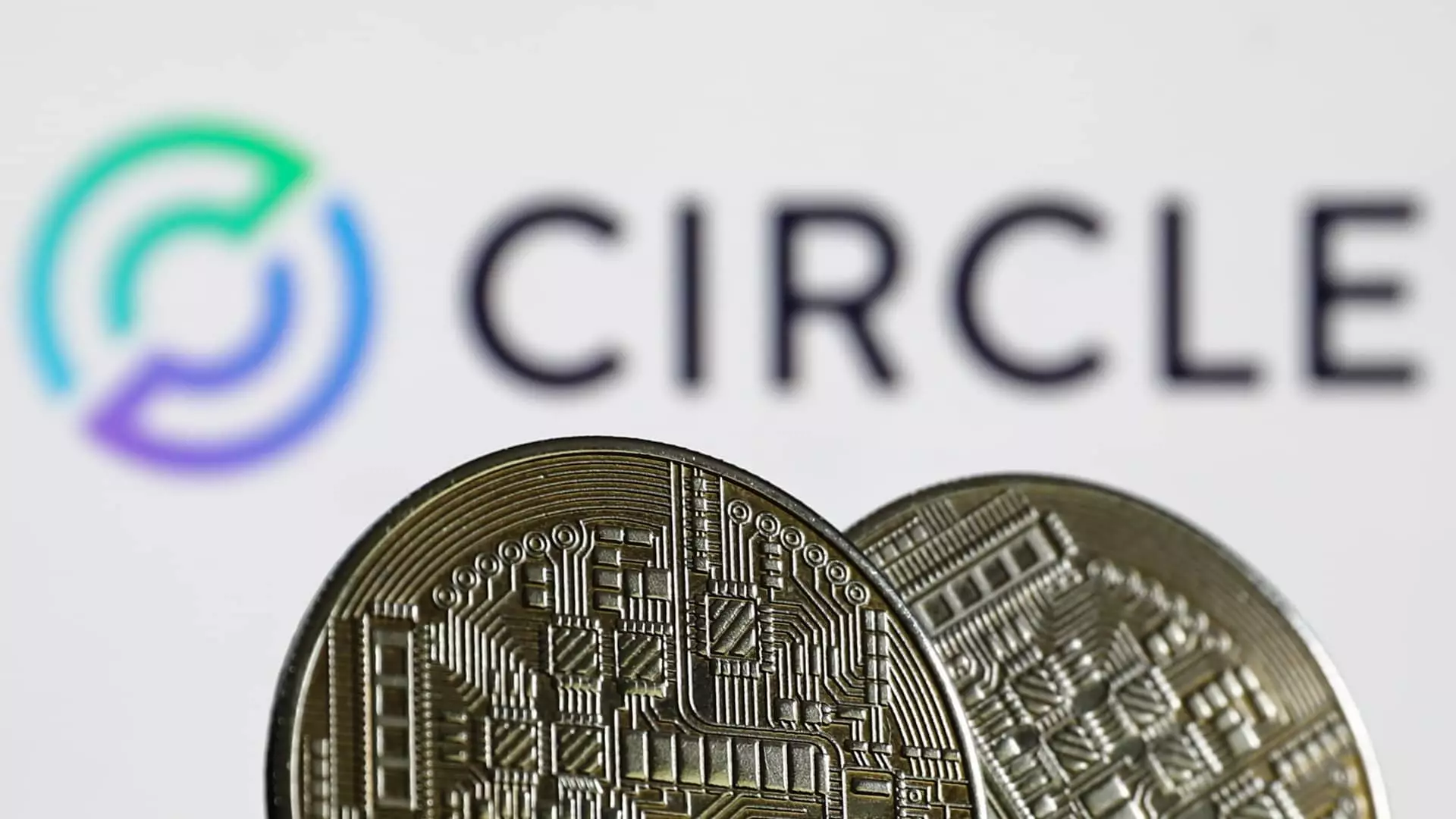Circle, the entity behind the widely recognized USDC stablecoin, is embarking on an initial public offering (IPO) journey that many have been eagerly anticipating. This move, aimed at raising approximately $624 million with a staggering valuation of around $6 billion, has sent ripples through the cryptocurrency ecosystem. The ambition encapsulated in this endeavor reflects not just the growth trajectory of Circle, but also highlights the broader implications it carries for the crypto market at large. For anyone following the developments in digital currencies closely, the initial public offering isn’t merely a financial mechanism; it represents a pivotal moment in the acceptance and regulation of cryptocurrencies in mainstream finance.
Valuation Optimism Amid Regulatory Changes
In their filing, Circle outlined plans to release 24 million shares of Class A common stock—a significant portion of which is being sold by existing stakeholders. The proposed pricing of $24 to $26 per share underscores optimistic market sentiments, as this IPO comes at a time when legislations surrounding cryptocurrencies are beginning to take shape. The Senate’s recent advances in establishing a regulatory framework for stablecoins is a landmark moment that hints at future legitimacy for the industry. Many see Circle’s IPO as an indicator of rising trust and belief in stablecoins as a viable and essential financial instrument.
Cathie Wood’s ARK Investment Management has signaled an eagerness to invest up to $150 million in this IPO, an endorsement from a well-respected figure in the investment world. Such backing could draw additional institutional interest, suggesting that investors are increasingly considering stablecoins not just as speculative assets but as integral components of their portfolios.
The Ripple Effect on Coinbase
Circle’s IPO isn’t just a critical development for the company; it also carries significant implications for Coinbase—a co-founder of USDC. With a symbiotic revenue-sharing agreement, Coinbase relies heavily on Circle’s success. If USDC solidifies its position as the leading stablecoin—as Coinbase CEO Brian Armstrong has boldly claimed it intends to—this could result in major financial windfalls for the exchange. The mutual reliance between Circle and Coinbase highlights a strategic alignment that could either bode well for both entities or create a volatile market reaction if expectations are not met.
The recent surge in USDC’s market cap, which has grown by an impressive 40% this year, is indicative of the increasing demand for stablecoins. Most notably, USDC constitutes approximately 27% of the total stablecoin market cap, trailing only Tether. Investors can hardly ignore these statistics, as fluctuations in stablecoin values directly influence the broader cryptocurrency ecosystem. This evolving dynamic is a demonstration of how closely woven the threads of cryptocurrency are, with each player’s moves reverberating across the entire sector.
Stablecoins: The Future of Financial Transactions?
Historically, stablecoins like USDC have predominantly served trading and collateral roles within decentralized finance (DeFi). However, their capacity for swift and cost-effective dollar transfers is gaining traction with banks and fintech firms. Recently, discussions surrounding their role in preserving U.S. dollar dominance have intensified, providing a narrative that is increasingly attractive to both traditional financial institutions and crypto evangelists alike. The ability of stablecoins to facilitate seamless transactions on a global scale positions them as potential game-changers in the future of finance.
With the U.S. government focusing on establishing a regulatory framework, the backing for stablecoins could bolster their adoption. As the rhetoric around dollar utility gains momentum, the role of cryptocurrencies may evolve from niche trading tools to cornerstone financial instruments—shaping how assets are transferred, stored, and utilized across borders.
A Cautious Yet Optimistic Outlook
While the enthusiasm surrounding Circle’s IPO is palpable, it is essential to approach these developments with cautious optimism. The regulatory environment remains uncertain, and the trajectory of crypto legislation could significantly impact the success of USDC and its associated players. Investors should remain vigilant and critically analyze the implications of these changes, rather than succumb to unbridled excitement. The balance between innovation and regulation is delicate; get it wrong, and both the companies and the nascent market could face unforeseen challenges.
The stakes are undeniably high, but the potential rewards might be higher still. Circle’s IPO marks a vital juncture not just for the company, but for the entire cryptocurrency landscape. The conversation around stablecoins has evolved, and how the market embraces this changing narrative could define its future trajectory.

